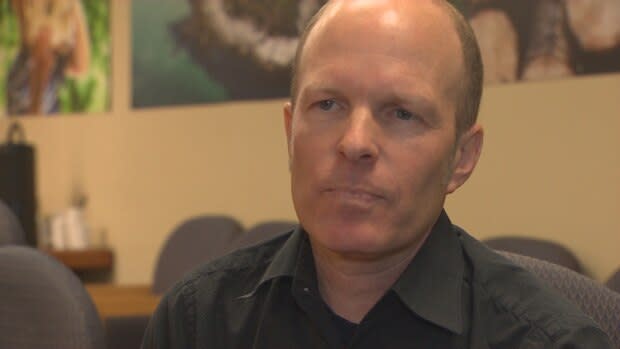N.S. areas prone to sinkholes highlighted in interactive online map
The provincial government is urging Nova Scotians to consult an online map to reduce their risk of suffering damage from sinkholes. The map shows risk levels across the province and where the province's more than 1,000 known sinkholes are located.
Officially called the "Karst Risk Map of Nova Scotia," the online map was built by combining provincial geology data with a database of known sinkholes.
Karst is a geological term for terrain that includes running water and dissolvable rocks such as gypsum and limestone, leading to the formation of sinkholes and caves.
"The first step towards reducing your risk is to understand where there's a higher chance of sinkholes occurring, and that's what the map does," said John Drage, a senior geologist with Nova Scotia's Department of Lands and Forestry.
Users can zoom in on the map to look at a particular community, or search by street address.

It shows if an area has a low, medium or high risk for sinkholes.
Drage said in this context, risk is a relative term because high-risk areas have on average one sinkhole per 100 square kilometres of land.
"The risk is still low," he said.
Drage said in the past 10 years he's been working on sinkholes, he hasn't seen anyone suffer injuries because of sinkholes, but he's seen buildings damaged by them.
"I've only seen two cases in the last five years where there has been damage to infrastructure," he said. "So it doesn't occur very often, but when it does, it can have expensive implications. So it's still worthwhile trying to reduce those risks if you're in a high-risk area."
Oxford example
Drage said he started to develop the sinkhole map in 2014, four years before a sinkhole appeared in Oxford, N.S., shut down the local Lions Club Community Centre and made national headlines.
Drage said nine per cent of the province's land mass is in the high-risk zone, which contains 96 per cent of the province's sinkholes. Areas where sinkholes are most probable are the Windsor area and the landscape around Oxford.
"Within the high-risk areas, there are areas that are higher risk and the best way to see that on the map is to look where there are a number of sinkholes," he said.

Drage said the best way to protect existing buildings from sinkholes is to keep rainwater and other runoff at a distance.
"What you don't want to do is concentrate your stormwater runoff in one place," he said.
"That leads to dissolving the bedrock, which leads to sinkholes. So what you want to do is first try to disperse it as much as possible."
Drage said the solution can be as simple as installing pipes that carry water from downspouts away from a home's foundation, but the ideal solution is to direct the water into an existing natural watercourse.

In the case of new construction, Drage said it's wise to inspect the property for signs of caving or sinking, or in the case of a large project, to pay for a geological inspection.
He said it's possible to design buildings to be sinkhole resistant.
"Sometimes they'll extend foundations larger than you would need, but large enough to span a sinkhole so the whole building wouldn't fall into the sinkhole," he said.
He said it's also possible to repair a sinkhole by plugging a drainage channel in the underlying bedrock with concrete.
MORE TOP STORIES


